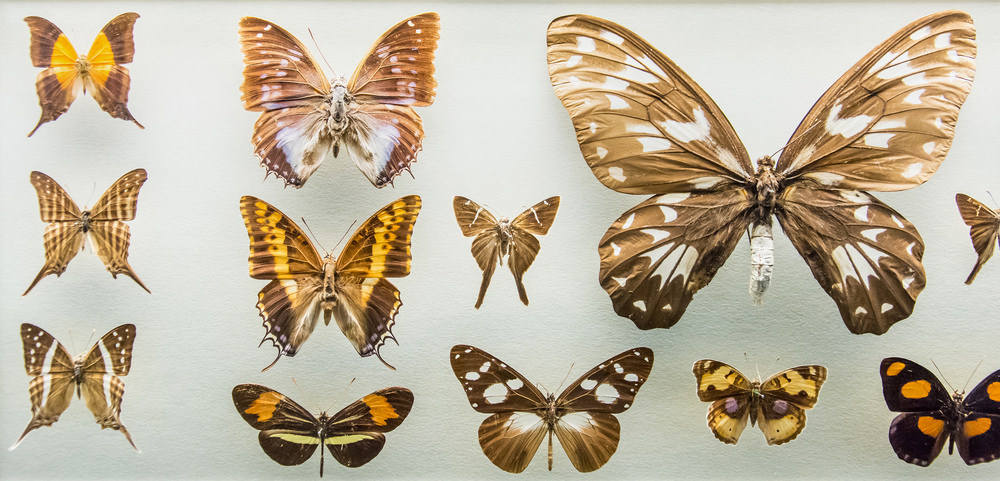
Starting on November 1, with the season opening of the Butterfly Conservatory at the American Museum of Natural History, you'll be able to enjoy a sense of summer just as winter starts to roll in.
This is one of the museum's most popular annual seasonal exhibitions. Butterflies and moths make up a large group of insects known as the Order Lepidoptera (lep-i-DOP-ter-ah). The name—from the Greek lepido, "scale," and ptera, "wings"—refers to a prominent feature of adult butterflies and moths, the tiny scales that cover the wings and the rest of the body.
Adult butterflies are wonderfully diverse in shape, size, and color. Active during the day, they live almost everywhere around the world, from Arctic tundra to tropical rain forests.
There are more than 250,000 known species of Lepidoptera, of which about 18,000 are butterflies. Based on their anatomy, butterflies are classified into five families. This exhibition features butterflies from three of the families: the Pieridae (PYAIR-i-dee), commonly known as whites and sulphurs; the Papilionidae (pah-pill-ee-ON-i-dee), or swallowtails; and the Nymphalidae (nim-FAL-i-dee), which includes morphos, longwings, and others.
During this century butterfly diversity has decreased alarmingly in some parts of the world, pointing to the need for better environmental management and public education. The greatest threat to the world's butterfly species is the ongoing loss of suitable habitat. This loss is due primarily to human activities, including agriculture, logging, urban expansion, industry, recreation, and pollution.
Some human actions take a direct toll on butterfly populations. Pesticides do not always distinguish between "pests" and harmless species. Some herbicides harm butterflies' food plants. Ultimately, global climate change will alter the distribution of plants and affect butterflies in ways that we do not yet understand.
What can we do? We need to change our uses of land and conserve or restore butterfly habitats. We need to promote basic research on butterflies to increase our knowledge about them—because we know so little about many species, it is difficult to establish protective measures. And we need to increase public awareness and education about butterflies, through exhibitions like this one.
All of the butterflies in this exhibition were from butterfly farms—commercial ventures praised by environmentalists.
In regions where tropical forests have been destroyed by logging, agriculture, and development, butterfly farms offer a way for people to make a living by using the forest instead of cutting it down.
Butterfly farmers keep adult butterflies in netted cages or other enclosures. The eggs laid by the butterflies are gathered by hand and, after they hatch, the caterpillars are raised on a diet of their host plant. When the caterpillars enter the pupal stage, they are immobile and easy to transport. Farm workers quickly collect and pack the pupae, which are exported around the world to collectors and exhibitions like this one. The Museum's butterflies were from farms in Costa Rica, Texas, and Florida. There are also butterfly farms in South America, Southeast Asia, the South Pacific, and other tropical regions.
Most butterfly farms sell only to exhibitions, educators, and responsible collectors, who keep the adult butterflies in captivity. Breeding butterflies for release into the wild at special events poses serious risks to wild butterfly populations and is not endorsed by conservationists.

